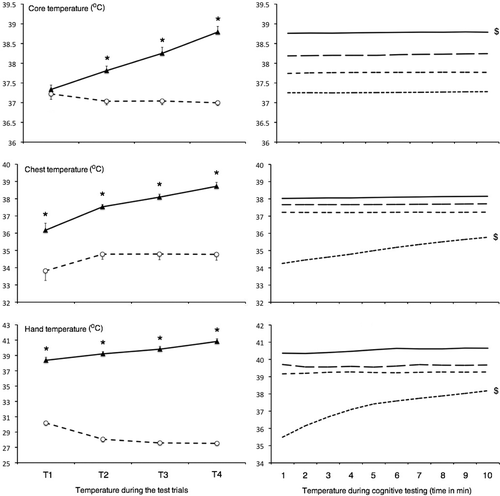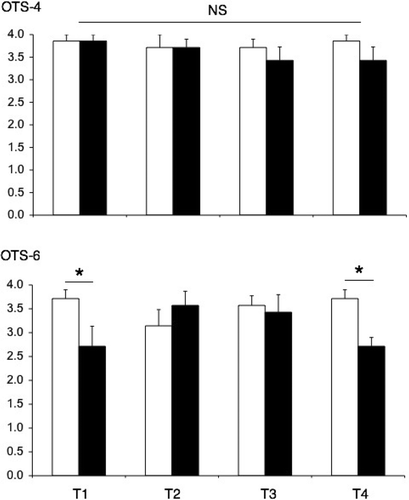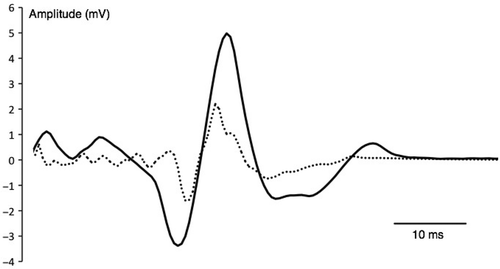Figures & data
Figure 1. Core, chest and hand temperatures during a trial (left panel) in neutral (CON, dashed line) and hot (HOT, plain line) environments as well as during the cognitive testing of the different sessions (T1, T2, T3, T4) in hot condition (right panel). Values in Mean ± SEM. *Significant differences between conditions; $significant increase during the cognitive testing, p < 0.05.

Figure 2. Number of problems solved on the first choice during the OTS (One Touch Stockings of Cambridge). Data in neutral control (CON, white bars) and hot (HOT, black bars) environments for two different levels of difficulty (OTS-4, top graph; OTS-6, bottom graph), at 4 different sessions (T1, T2, T3, T4). Values in Mean ± SEM. *Significant differences between conditions, p < 0.05.

Figure 3. Neuromuscular responses in neutral (CON, dashed line) and hot (HOT, plain line) environments at 4 different sessions (T1, T2, T3, T4). Maximal voluntary force displayed an interaction effect with significantly lower values in HOT than CON in T2, T3 and T4. Normalised (RMS/M) muscle electrical activity was globally lower in HOT than CON. The amplitude of the motor-evoked potential normalised by the amplitude of M-wave (MEP/M) displayed an interaction effect with significantly lower values in HOT than CON in T3 and T4. Values in Mean ± SEM. *Significant differences between conditions, p < 0.05.

